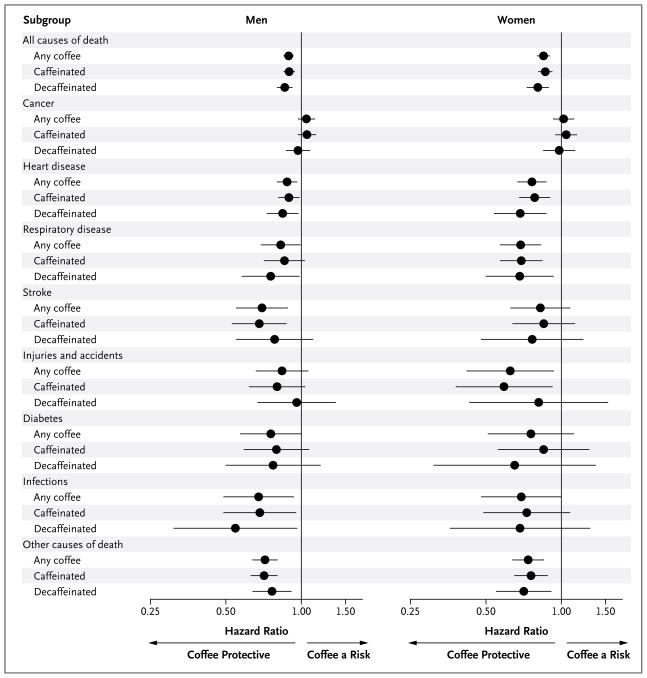Figure 1. Subgroup Analysis of Associations between the Consumption of 4 or More Cups of Coffee per Day and Total and Cause-Specific Mortality.
Hazard ratios for death from all causes and from specific causes are for the comparison of men and women who drank 4 or more cups of coffee per day with those who did not drink coffee. Participants were classified as drinking caffeinated or decaffeinated coffee according to whether they reported drinking caffeinated or decaffeinated coffee more than half the time. Risk estimates for other categories of coffee consumption are shown in Tables 2 and 3 in the Supplementary Appendix. Risk estimates were adjusted for the following factors at baseline: age; body-mass index; race or ethnic group; level of education; alcohol consumption; the number of cigarettes smoked per day, use or non-use of pipes or cigars, and time of smoking cessation (<1 year, 1 to <5 years, 5 to <10 years, or ≥10 years before baseline); health status; diabetes (yes vs. no); marital status; physical activity; total energy intake; consumption of fruits, vegetables, red meat, white meat, and saturated fat; and use or nonuse of vitamin supplements. In addition, risk estimates for death from cancer were adjusted for history of cancer (other than nonmelanoma skin cancer) in a first-degree relative (yes vs. no). In women, risk estimates were also adjusted for use or nonuse of postmenopausal hormone therapy. Horizontal lines represent 95% confidence intervals.

